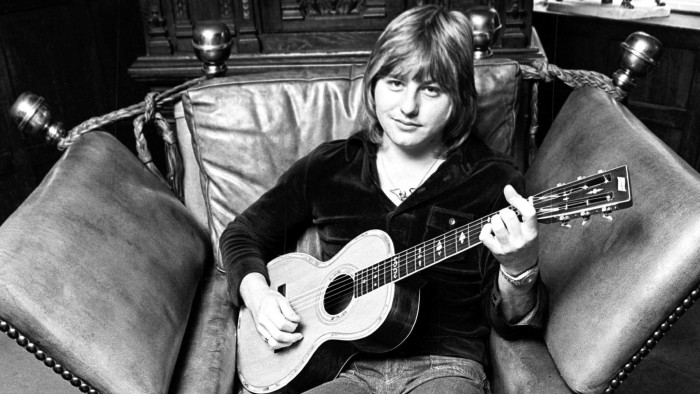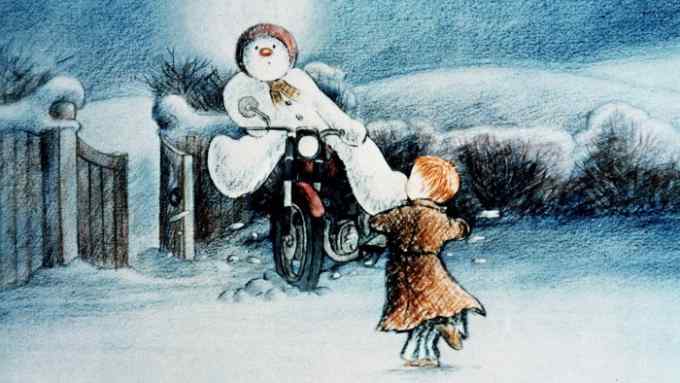I Believe in Father Christmas — Greg Lake’s song has darkness as well as sparkle

Simply sign up to the Life & Arts myFT Digest -- delivered directly to your inbox.
It’s warm, catchy as hell, one of the most enduringly popular Christmas songs, and yet its roots lie in that thoroughly un-poppy genre, prog rock. “I Believe in Father Christmas” was written by Greg Lake, who died this week at the age of 69, and Pete Sinfield; Lake was bassist and singer with the hyper-technical trio Emerson, Lake & Palmer, while he and Sinfield had previously been members of prog pioneers King Crimson (Sinfield it was who wrote “21st Century Schizoid Man” with its apocalyptic couplets such as “Cat’s foot, iron claw/Neuro-surgeons scream for more”).
ELP’s keyboardist Keith Emerson had encouraged each member of the band to come up with solo material, so in 1975 Lake teamed up with lyricist Sinfield to create something out of a “Christmassy” chord sequence Lake had written. The result was thoughtful, but melodic too: a humanist, anti-consumerist Christmas song that also manages to warm the cockles. And by adding a snippet of twinkling sleigh-ride music by Sergei Prokofiev, they summoned the sparkle of Christmas, creating, as Sinfield has said, “a picture-postcard Christmas, with morbid edges”.
The lyrics are mostly Sinfield’s, and the first two verses juxtapose his own early memories of Christmas (“eyes full of tinsel and fire”) with his subsequent loss of innocence (“And I saw him and through his disguise”). At this point Sinfield was concerned that the song would be too bleak, so he resolved matters with a more uplifting final verse (“I wish you a hopeful Christmas”). Meanwhile, Emerson — whose love of classical music had led ELP into crossover adventures in their Moog-driven arrangements of pieces such as Mussorgsky’s Pictures at an Exhibition — suggested inserting the Prokofiev snippet.
This section of the story is worthy of a Life of a Song of its own. At the time he wrote it, Prokofiev was living in Paris, pining for his homeland, a former proponent of dissonance who had steadily turned to composing the more melodic material favoured by his Soviet paymasters before his eventual return to Moscow in 1936. In 1933, Prokofiev was commissioned to write the score for the satirical film Lieutenant Kijé, and the resulting composition was well received. These were early days for film composers, and the jaunty “Troika” section eventually used by Lake was one of the first pieces of film music to become an orchestral suite.
In the film itself, the troika sequence features not, as might be imagined, a magical three-horse sleigh journey through glistening snowscapes, but a drunken night-time trip in which one of the characters is so addled by drink that he tumbles off the sleigh. The melody is initially sung; Prokofiev’s tune comes from an old Hussar drinking song, which runs, dissolutely: “Like a roadside inn is a woman’s heart, where travellers stop and stay; checking in or checking out, all the night and all the day.”
“I Believe in Father Christmas” was a hit worldwide, kept from the UK number one slot only by Queen’s gargantuan smash “Bohemian Rhapsody”. It has subsequently become a perennial on radio playlists and, ironically, given its anti-commercial lyrics (“They sold me a dream of Christmas”), supermarket soundtracks. The promotional film for the single was a curious affair, shot partly in the caves where the Dead Sea Scrolls were discovered.
Lake re-recorded the song several times with his ELP colleagues and with orchestras, but the original, with its resonant acoustic guitar, remains the best. Cover versions range from the excruciating (2009 X Factor winner Joe McElderry’s version has a jaunty beat that’s wildly inappropriate) to the bombastic (U2’s Bono batters listeners into submission when he goes up an octave). Susan Boyle’s version has a Caledonian lilt. The British band Embrace strip it back to piano and voice, and the result is touching.
Also worth mentioning in dispatches is a rendition, available on YouTube, featuring Lake alongside fellow prog-rock veteran Ian Anderson of Jethro Tull, on flute. They were performing in St Bride’s Church in London in 2006, and the recording is not of the highest quality, but with Anderson’s delicate flute ornamentations, and bolstered by the church organ, the song’s spirit shines through.
Photograph: Ian Dickson/Redferns/Getty

Comments